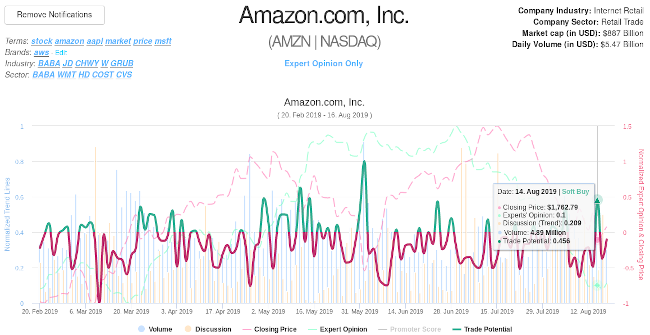Building a startup from scratch is hard work. Particularly, when you’re a solo founder, such as myself. You simply have limited time. There is a constant, balancing act between where to focus: customer engagement, product management, engineering, design, etc.
For me, the order is:
- Customers
- Product management
- Engineering
Without customers you can’t develop the product and there is no point in engineering anything. Unfortunately, obtaining / retaining customers is particularly difficult when you’re starting a company. Your product is almost always sub-par product, if you have a product at all. With that in mind, you often have to be creative.
This is the journey of two of the products that taught me the most last few years. They are products where I have managed to keep customers relatively engaged and hopefully what I learned will help you.
Startups Start Dead
A lot of would-be founders believe that startups either take off or don’t … Actually startups take off because the founders make them take off.[1]
– Paul Graham, Found of YCombinator
I thought it prudent to mention, the essay “Do Things That Don’t Scale” by Paul Graham does a great job relaying the concepts the concepts of this post and I highly recommend a read.
In his essay, Paul Graham postulates that startups start without “life”, but merely an idea of something better. From the kernel of an idea, hard work turns that idea into a business. The most important component of that hard work is collecting and coalescing your [potential] customer ideas into your product(s). This is key and often a primarily manual task, something that doesn’t scale. However, it is what brings your company to fruition, as customers buy into the idea and to you.
Said differently, startups will initially have a sub-par and labor intensive product. Implying it will often fall short of customer expectations. To overcome this, you’ll have to figure out a way to build loyalty and trust that the product will get better. This is easiest when the customer has a need and no alternatives, because they’ll work with you to succeed.
Below are two products where I managed to build relationships with the users, which led to loyalty and in the end, a path towards sustainability / profitability.
Bringing Easy A to Life
Easy A is a website that enables students to view course grade distributions, median grade, difficulty, workload, etc. on all the courses at their university. Students can add their grades and also obtain predicted difficulties on semester workload, etc.
 The website was tossed together in a weekend. I FOIA requested UIUC, threw up on a wordpress website, added some php code, pulled data directly from a CSV. You can read more about the initial idea on the post: Announcing Easy A.
The website was tossed together in a weekend. I FOIA requested UIUC, threw up on a wordpress website, added some php code, pulled data directly from a CSV. You can read more about the initial idea on the post: Announcing Easy A.
The website was later rewritten in Rails and today has thousands of students add their grades, has paying students, and around a quarter of a million unique visitors a year.
Obtaining Customers
Obtaining customers was fairly straight forward with this project. I put it on the website (wordpress at this point) on my courses forums. Then, I joined the Facebook group(s) and UIUC subreddit and shared the website. While that was effective, as you may suspect a post is short lived. I’d see a spike of traffic, then it’d drop off. What I discovered was that people searched for prior comments on courses in the Facebook groups.
To improve conversion and visibility, I started posting grade distribution photos, recommendations, and importantly links to many of the questions about courses. Essentially, becoming a pseudo-advisor for many of the students, building trust. In addition, I implemented a feature where people get free searches if they register and if they want more they have to pay. This brings in enough revenue to continue to fund the project.
Although the project was not ideal. People stuck with me and the personal touch of advice went a long way. Many of these users would share Easy A for years to come.
ProjectPiglet.com
ProjectPiglet.com is a website I first thought up in 2013. The general idea led to me developing the ExpertRank algorithm, which ranks content, topics, people, really anything by the opinions given by experts. ProjectPiglet.com particularly focuses on how this relates to assets and can be used to suggest investment opportunities.
The platform itself has helped me make >100% YoY investing since 2015. While we have not publicly released that algorithm, we have launched ProjectPiglet.com. Which evaluates individual stocks / cryptocurrencies (but doesn’t compare them), effectively suggesting how to maximize profit on a single asset.
Retaining Customers
When we launched the ProjectPiglet.com we noticed general disappoint after registering, retention was abysmal. We suspected it was simply too complicated and needed work. People want a “Purchase Now” button and exit interviews confirmed my suspicions: “It’s too complicated” was and still is a common statement.
To combat the poor retention we started did five things:
- Added a credit card on signup, increasing the barrier to entry
- Offered a 30 day free trial
- Add 30 additional free days, every time they responded to our survey
- Hand review and respond in detail to each survey (usually, how we were going to add / fix an issue)
- Added an on-boarding tutorial
Long-story short, it worked! By working with customers directly they were both loyal and helped me implement features. Literally, we had customers sending me code to improve the site! I think this was the real change for this business.
My goal today, for our beta, is keeping just enough customers that we can keep up with high-touch feedback. This brings in a ton of valuable feedback and enough revenue to cover hosting. We’ll take calls with customers, email regularly, etc. It’s high touch, but has brought the platform a long way.
Note: The primary focus of the platform was to sell to businesses via InsiderOpinion.com and to sell ProjectPiglet.com to trading firm(s). Thus, we have not pushed growing ProjectPiglet.com further, at least not yet.
Closing Thoughts
Although only two products were discussed, I’ve built / managed many more. One thing I cannot emphases enough, is that making each and every customer feel apart of your idea / product is the single most important thing to your business.
I’ve worked at multiple Fortune 100 companies and being responsive to customers is just as important there as it is for your business. Ask what you can do for them, engage constantly, make the customer feel like they are invested, and they’ll support you.

